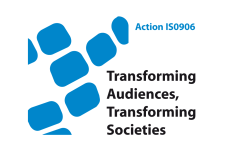- About the Action
- Events
- PhD workshop - Ljubljana 2014
- Action Open Conference - Ljubljana 2014
- New Media and Participation conference - Istanbul 2013
- Belgrade meeting 2013
- Media literacy research and policy - Brussels 2013
- ICA Pre-Conference 2013
- Tampere meeting 2013
- Budapest workshop 2012
- Milan meeting 2012
- Brussels PhD workshop 2012
- Brussels Action workshop 2012
- London meeting 2011
- Zagreb Conference 2011
- Lisbon meeting 2010
- Affiliated events
- WG 1
- WG 2
- WG 3
- WG 4
- Cross-WG
- Output
How we survived digital television broadcasting switchover: The case of Croatia
Car, V., Andrijasevic, I. (2013). How we survived digital television broadcasting switchover: The case of Croatia. International Journal of Digital Television, 4(3), 279-298.
http://www.intellectbooks.co.uk/journals/view-Article,id=16326/Abstract: In its 80 years long life television has faced many challenges. It was not only political decisions or imperatives of industry that pushed television into transition. Often, it was and still is technology that unavoidably incites television to change. The last challenge in a row was transition from analogue to digital broadcasting. The main reason for this transition lies in advantages it brings: improved picture and sound quality, wider range of channels, and new services. No matter Croatia was not an EU member state, a process of digital television broadcasting switchover followed the EU deadlines. After the successful implementation of the pilot project "Digital Istria", in mid 2008 the Government of the Republic of Croatia adopted the digital switchover strategy which set the framework for transition to digital terrestrial television broadcasting and determined 1 January 2011 as a date when Croatia farewells analogue terrestrial broadcasting for good. As s result of well designed and implemented public policy on 5 October 2010 Croatia, as the first country in this part of Europe, successfully switched to digital broadcasting of programs on the national level. This article brings overview of the key activities taken during the adventure of surviving digital television broadcasting switchover in Croatia. The aim of this article is to provide a synthesis of the implementation process of DTV in Croatia, its successes and failures.

